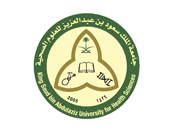Abstract
Purpose: Medical students and clinical teachers thrive to establish meaningful learning relationships in overwhelmed and ever-shorter clinical rotations. The challenge for medical educators is to design pedagogical approaches capable of bonding students and teachers into the same community of practice (CoP). In this work, the authors explored how Social Media and Gamification strategies sum up to boost medical students’ participation in a blended learning strategy to teach Emergency Medicine. Method: Final year medical students (n = 462) from 5 consecutive years were included in a longitudinal study with historical controls and were divided into three groups. The first group (CONTROL; n = 125) had access to a blended learning strategy; the second group (FACE; n = 179) had access to the blended learning strategy and interacted with a fictional facilitator in Social Media; and the third group (GAME; n = 158) had access to the former strategies plus a gamification approach. Results: Social media and gamification progressively increased students’ participation in the online course as measured by the number of hours logged on from an average of 60 h in CONTROL to 87 h in FACE and 140 h in GAME (P < 0.01). There was a positive and significant correlation between students’ grades on cognitive tests and OSCEs exams with the online participation. Both strategies nurtured students’ sense of belonging to the community of Emergency Medicine and improved their self-regulation to study. Discussion: Social Media and Gamification catalyzed the consolidation of a shared identity for students and teachers, which fostered the creation of a community of practice and increased the participation of students in learning activities. © 2018 King Saud bin AbdulAziz University for Health Sciences
Recommended Citation
Grangeia, Tiago de Araujo Guerra; de Jorge, Bruno; Cecílio-Fernandes, Dario; Tio, Rene A.; and de Carvalho-Filho, Marco Antonio
(2019)
"Learn+Fun! Social Media and Gamification sum up to Foster a Community of Practice during an Emergency Medicine Rotation,"
Health Professions Education: Vol. 5:
Iss.
4, Article 1.
DOI: 10.1016/j.hpe.2018.11.001
Available at:
https://hpe.researchcommons.org/journal/vol5/iss4/1



